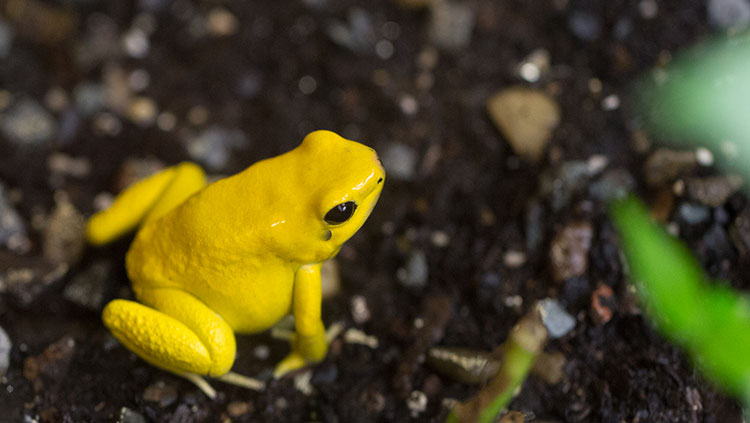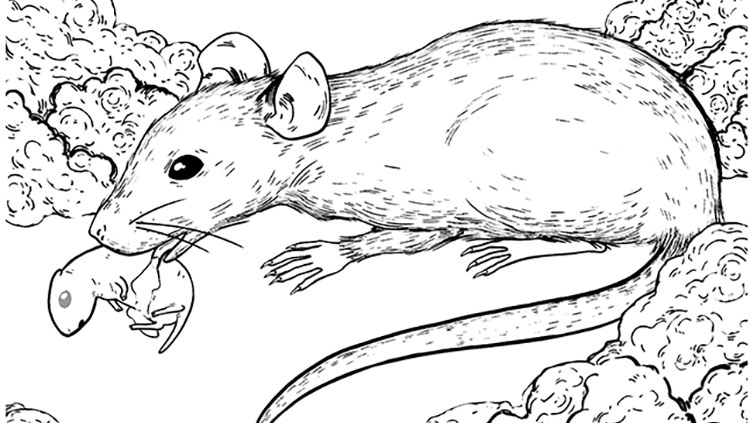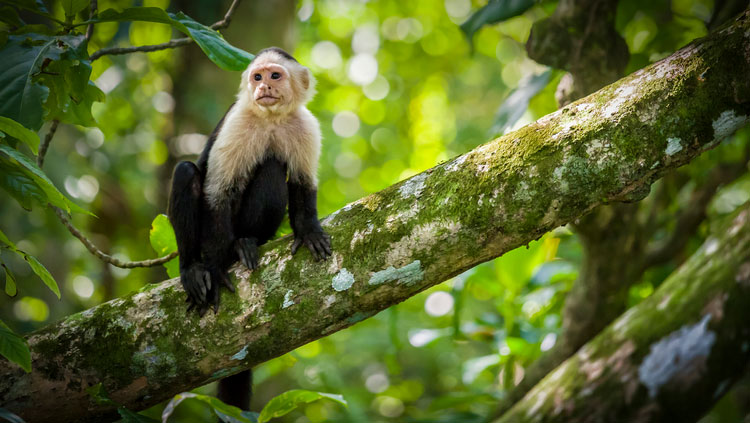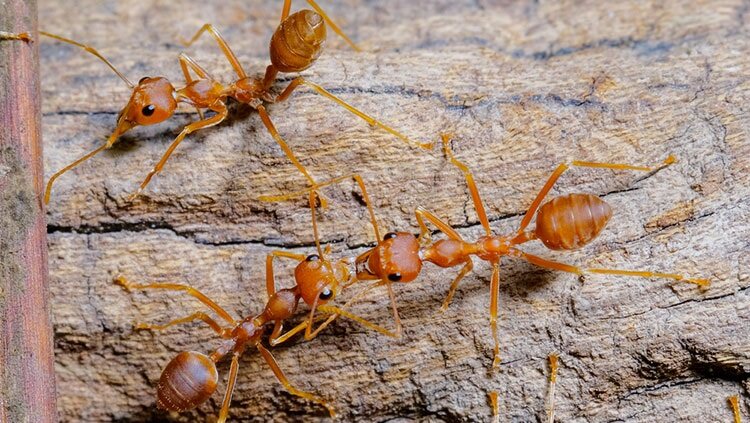“Toxin Sponges” May Prevent Poison Frogs From Poisoning Themselves
- Published13 Aug 2021
- Author Alexis Wnuk
- Source BrainFacts/SfN

The sunny hue of the golden poison frog is a warning to would-be predators: eater beware. Just two inches long, it packs enough poison in its skin to kill upwards of 20 people. Batrachotoxin irreversibly binds to sodium channels in neurons and muscles, throwing them open and allowing sodium ions to rush into the cells. Neurons depend on a careful balance of ions inside and outside the cell – with that balance obliterated, they can no longer fire nerve impulses, resulting in paralysis and cardiac arrest.
The golden poison frog doesn’t make batrachotoxin. Instead, it builds its chemical arsenal by eating toxin-containing beetles. So why doesn’t the frog didn’t succumb to the poison itself? One hypothesis: the golden poison frog possesses special toxin-resistant sodium channels. Researchers from California tested that theory by isolating sodium channels from the frogs’ muscles and sequencing the channel’s genetic code. When they introduced the code into stem cells in a dish, they took up the instructions and built the frog sodium channels. The channels turned out to be just as sensitive to batrachotoxin – they lacked any special resistance to its effects. The researchers reported their findings August 5 in the Journal of General Physiology.
So what explains the frogs’ apparent immunity to the toxin they secrete? The researchers think the frogs might harbor molecular sponges that mop up toxins before they can inflict any damage. Bullfrogs posses one such defense system called saxiphilin. When the researchers added this protein to the dish, the sodium channels were protected from a related toxin produced by shellfish. Figuring out whether the golden poison frog possesses a similar defense system against batrachotoxin could help scientists develop antidotes against the lethal chemical.
CONTENT PROVIDED BY
BrainFacts/SfN
References
Also In Animals in Research
Trending
Popular articles on BrainFacts.org


















